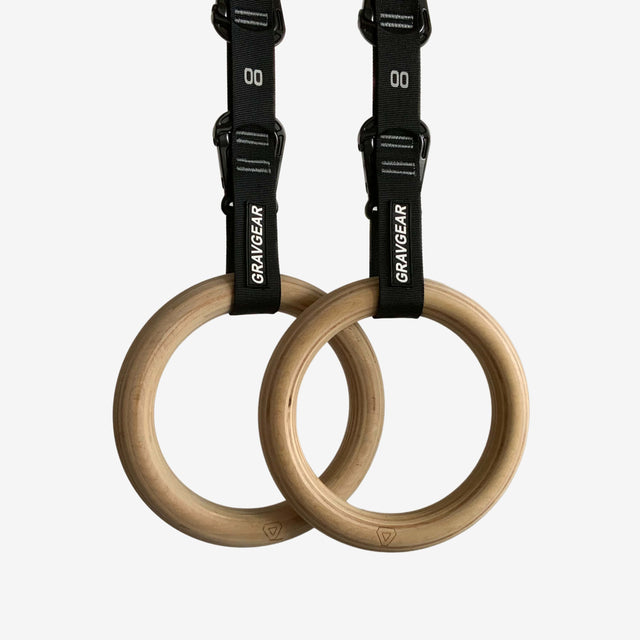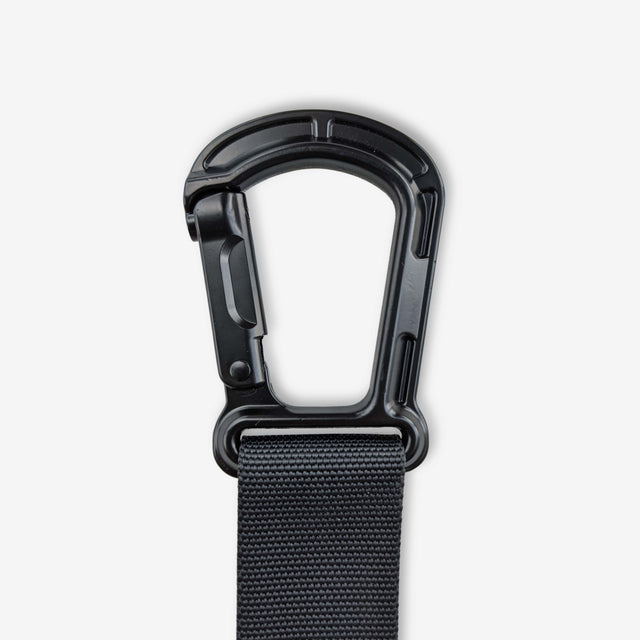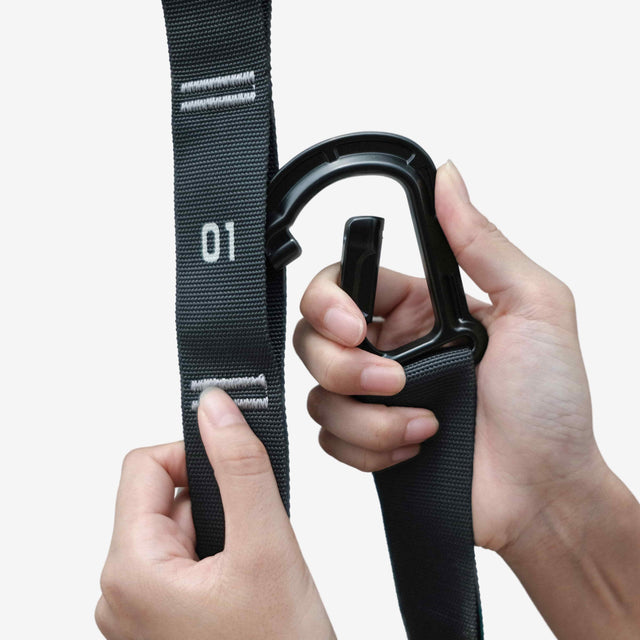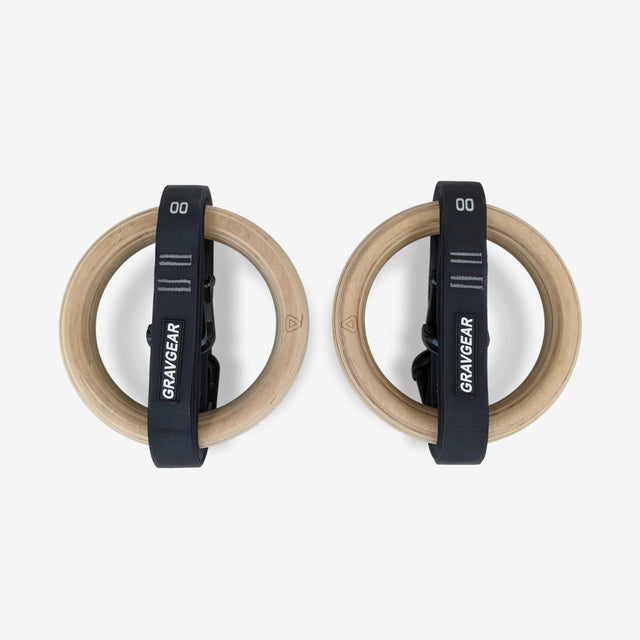Maltese Cross Rings Gymnastics Tips & 2 Ways to Progress
Essential strength builders like weighted dips, band-assisted holds, and scapular shrugs to strengthen shoulders, core, and elbows should be a good starter. Choose from two targeted progressions—back lever to planche or Iron Cross with bands—to match your level and build serious stability without injury. Packed with form tips, grip advice, and injury-prevention essentials, this guide has everything you need to tackle the Maltese cross safely and make real progress.
Let’s get into what we’re covering:
- Essentials before you start
- Pathways to the Maltese cross
- 3 Essential training tips & exercises for Maltese preparation
- 3 Common pitfalls & how to avoid them
- 🫵 LET’S GO
🏁 Start wherever YOU are!
This guide’s got you covered, no matter where you’re at in your training journey.
Whether you’re a total beginner or a seasoned pro, the steps below let you build strength at your own pace. There’s no rush—just good, honest progress that lays a rock-solid foundation for the Maltese cross.
Essentials before you start
The Maltese cross isn’t just about brute strength—it’s about stamina, patience, and grit. This skill demands more than power; it calls for bombproof stability, joint strength, and a mindset tough enough to handle the journey.
Before you dive in, make sure you’re covered in three key areas: joint health, stability, and starting strength.
Here’s your readiness checklist to keep things safe & steady…
✅ Joint health & mobility
The Maltese cross puts your shoulders, elbows, and wrists to the test, so it’s essential to keep your joints in top shape.
Make sure you’ve got a decent range of motion with no pain. Kick things off with shoulder mobility drills and wrist stretches—these moves will help your joints handle the demands of the Maltese and prevent strain from building up.
✅ Core & shoulder stability
You need stability that holds up, mate. Start with a plank—hold it solid for at least 30 seconds.
From there, move on to ring support holds, where the goal is to keep the rings stable at shoulder width.
These drills build control and strength in all the right places, setting you up to handle tougher moves on the rings with confidence.
✅ Starting strength
Forget flashy tricks—begin with compound moves like dips and push-ups. They’re no-nonsense basics that pack a punch and get your upper body ready for heavier loads. Aim for 10-15 strong push-ups and a few sets of dips.
These moves will give your muscles the grounding they need to start your Maltese journey.
Injury prevention tip: Progressing to the Maltese cross isn’t a sprint, mate. Go easy on yourself—build up bit by bit. Focus on controlled movements and small improvements. Trying to leap ahead too soon is the fastest way to setbacks and a longer training journey overall. So stay patient, listen to your body, and give it the time it needs to adapt.
Pathways to the Maltese cross
The Maltese cross isn’t a one-size-fits-all kind of skill—there’s more than one way to get there, and you can pick the path that suits you best.
Here are two solid progressions, so whether you’re already pulling off advanced moves or just getting comfy on the rings, you’ve got options.
Traditional progression
This is the way to go if you’ve already got some experience with the basics, like the back lever and planche, and you’re ready to step it up.
- Start with the back lever
- Get comfortable holding a solid back lever with a hollow body. Keep that core tight and shoulders locked in—it’s all about stability here.
- Progress to straddle planche
- Gradually work towards a straddle planche. This move amps up your shoulder, core, and straight-arm strength—exactly what you need for the Maltese cross.
This traditional path is the perfect choice if you’re stoked to build on skills you’ve already nailed down and challenge yourself in new ways.
Alternative progression
If you’re newer to the rings or want to take a different route, this progression has your back. Start with the Iron Cross and use band assistance to ease into the Maltese cross, reducing strain but still building that bombproof stability.
- Build stability with the Iron Cross
- Start practicing the Iron Cross to develop rock-solid shoulder and elbow stability.
- Use band-assisted Maltese holds
- Loop a resistance band around the rings to support your weight while you lean into a Maltese hold. As you get stronger, reduce the band assistance to keep challenging those muscles without overloading your joints.
This alternative route is a top-notch choice if you’re just starting or prefer a bit more control. With band assistance, you can adjust on the fly and gradually build strength for a safe, steady path to the Maltese.
Note 📝 Perfect form means locked arms, no question. But if you’re just starting, don’t be afraid to keep a soft lock in the elbows. This lets you ease in without risking strain, giving you the time and control to work up to that “textbook” Maltese. Steady progress, mate—that’s the name of the game here.
3 Essential training tips & exercises for Maltese preparation
The Maltese cross is no walk in the park, mate—it takes targeted strength and joint resilience that can handle a heavy load.
Here’s a compact list of exercises to strengthen your shoulders, elbows, and core, prepping yourself to take on this bloody awesome skill.
☝️ – Straight-arm strength
Scapular shrugs
To build that shoulder strength and stability, start with scapular shrugs. Hang from the rings with straight arms, lift your shoulders up, engage those scapular muscles, then release. Go for 3 sets of 10 reps. This move is all about control—make it solid, and you’ll feel the difference.
Assisted Maltese holds with a band
Loop a resistance band around the rings for support and get into a Maltese hold. This exercise develops the control and shoulder stability you’ll need down the line. Gradually reduce band resistance as you progress. Think of it as humbling yourself now to hit bombproof strength later.
✌️ – Joint health
Band bicep curls
Anchor a resistance band and perform bicep curls to build up the elbow joint, which cops a fair bit of pressure in the Maltese cross. Go for 3 sets of 12-15 reps with light resistance to start. This isn’t about maxing out—it’s about laying down strong, durable joint foundations.
Shoulder-focused push-ups
Keep your elbows close to yourself as you push up, emphasizing shoulder engagement without overloading your joints. Aim for 3 sets of 10-12 reps. This will build up strength where it counts while keeping things controlled and steady.
🤟 – Core & stabilizer muscles
Planks
Hold a high plank position with a tight core—this builds core and shoulder stability, setting you up to maintain a hollow body when you take on the Maltese.
Ring holds
Grip the rings in a straight-arm support position, keeping them stable and close to your body. This is your stability sensei, teaching your core and stabilizers how to hold strong under pressure.
L-sits
Pull off L-sits on the rings or bars to engage your core and hip flexors—these will be critical for maintaining control in the Maltese position.
Form tips: Throughout each of these exercises, stay focused on keeping a hollow body position—engage your core, keep that back from arching, and lock in the alignment of your wrists, shoulders, and elbows. This is what builds the straight-arm strength that’ll hold up under pressure in the Maltese.
3 Common pitfalls & how to avoid them
The Maltese cross isn’t just about brute force—it’s a patience game. Plenty of athletes hit roadblocks or, worse, injuries by falling into a few common traps. Here’s what to watch for so you stay on track and injury-free:
1️⃣ – Rushing through progressions
Big mistake, mate. Jumping ahead before you are ready, or skipping foundational moves like scapular shrugs and band-assisted holds, is a surefire way to get sidelined by injuries. This isn’t a race—every step builds your base strength, so trust the process and let the gains come in their own time.
2️⃣ – Overestimating strength
The Maltese cross is a heavy-duty skill that even experienced athletes respect. Resist the urge to go “all in” unless you’re already holding planks and ring supports with ease. Go slow, track progress in small doses—like adding a few seconds each session. That way, you’re building consistent gains without stressing your joints.
3️⃣ – Ignoring form in favor of speed
Quality over speed, every time. It might feel slow mastering each step, but nailing perfect form with a tight core and straight arms sets you up for success. Master the basics, and you’ll be ready for the full Maltese when the time’s right.
🫵 LET’S GO
The road to the Maltese cross is different for every athlete—that’s part of the challenge and the reward.
It might take months, maybe years to master. But the process is just as rewarding as the destination.
With that said, if you found this helpful or want EVEN MORE, then:
- Drop a comment below giving any feedback on this blog, sharing ideas, or showing others what’s possible
- Join our Gravgear telegram channel with over 3k+ members so you can share your progress
- And link this blog to your calisthenics comrades so they get on this challenge too!










0 Comments
There are no comments for this article. Be the first one to leave a message!